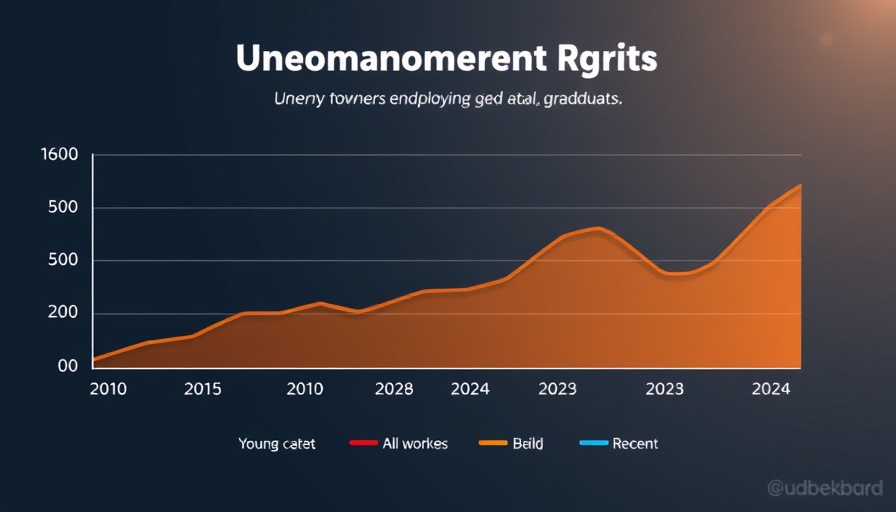
Understanding the Quarter-Life Crisis
The concept of a "quarter-life crisis" has gained traction in recent years, especially among Gen Z workers who are facing unprecedented challenges as they transition into adulthood. Unlike the midlife crisis traditionally associated with older generations, today's young adults grapple with anxiety stemming from economic instability, job insecurity, and mounting student debt. As defined by Alexandra Robbins and Abby Wilner in 2001, this period of self-doubt and uncertainty feels especially pronounced for those entering a workforce that many consider broken.
Shifting Despair: A New Economic Reality
Recent research from the National Bureau of Economic Research provides alarming insights into this crisis. Economists David Blanchflower and Alex Bryson found that despair among young people, particularly those aged 12-25, has markedly increased, reversing a historical trend where midlife was synonymous with emotional strife. Blanchflower's confessions reveal how the traditional boundaries of despair have blurred and shifted downward onto the shoulders of younger generations. What we once deemed a phase of life filled with promise has turned into a period of overwhelming pressures for many within this demographic.
Impact of the Labor Market on Mental Health
This youth despair is not simply a product of individual psychological struggles, but also stems from broader economic conditions. Blanchflower's research indicates a direct correlation between the labor market’s health and the emotional states of young adults. As they navigate an ever-evolving job landscape characterized by stagnant wages and precarious employment, it's becoming increasingly clear that the economic challenges faced today are fundamentally different from those encountered by previous generations. This phenomenon signals the imperative for society to rethink not only how we support young workers but also how we redefine success and stability for future generations.
From Despair to Action: What Can Be Done?
Addressing the surge in youth despair requires collective action. Businesses, educators, and policy-makers need to foster environments that nurture resilience rather than perpetuate fear and doubt. Initiatives that prioritize mental health, promote diverse hiring practices, and focus on sustainable growth are essential in alleviating some of the pressure young workers face today. The future for Gen Z can shift from a narrative of despair to one of empowerment if strategic initiatives are implemented.
In conclusion, the quarter-life crisis faced by Gen Z is profound and multifaceted. Understanding the economic and emotional factors at play is critical for stakeholders aiming to support the next generation of leaders and innovators.
If you're interested in learning more about how businesses and organizations can support young workers facing these challenges, consider exploring local initiatives or joining a community discussion on employment trends and psychological well-being.
 Add Row
Add Row  Add
Add 



Write A Comment